A Day of Remembrance
In this post, we focus on English for Creative Careers with an interview with Scottish artist Fiona Jappy.
About the Poppy Symbol
On this day we honour the fallen and remember all those who continue to serve in defence of our freedoms.
2385 Sparrows: For All the Sparrows at Sea
In this interview with Blue Noun English language School, artist Fiona Jappy reminds us that remembrance is not just for one day.
Fiona herself will be devoting the next 25 years to making the artwork 2385 Sparrows: For All the Sparrows at Sea.
Read on to find out all about.
Images on this page are all credited by Fiona Jappy, and are used with permission.
Please respect copyright.
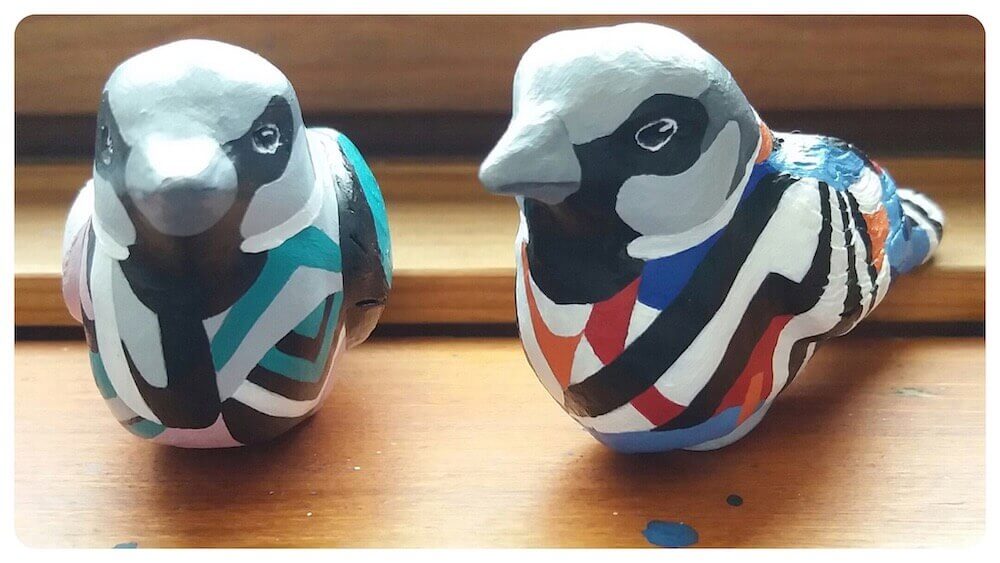
Artwork, 2385 Sparrows (detail)
Photo credit: Fiona Jappy
English for Art Careers | Interview with Scottish Artist Fiona Jappy
All 24 men serving aboard that trawler lost their lives but only one man’s body was found after it washed ashore. The other 23, including my Grandfather, were forever lost at sea.
Never returning home, they have no grave but the sea.
The sparrow was chosen for the nickname given to the men of the RNPS, nicknamed after the ‘Sparrow’s Nest’, the name given to the headquarters of the RNPS – HMS Europa in Lowestoft.
Thus all those who passed through HMS Europa were sparrows from the nest, and these 2385 men unfortunately never made it back there.

Artwork, 2385 Sparrows (work in progress)
Photo credit: Fiona Jappy
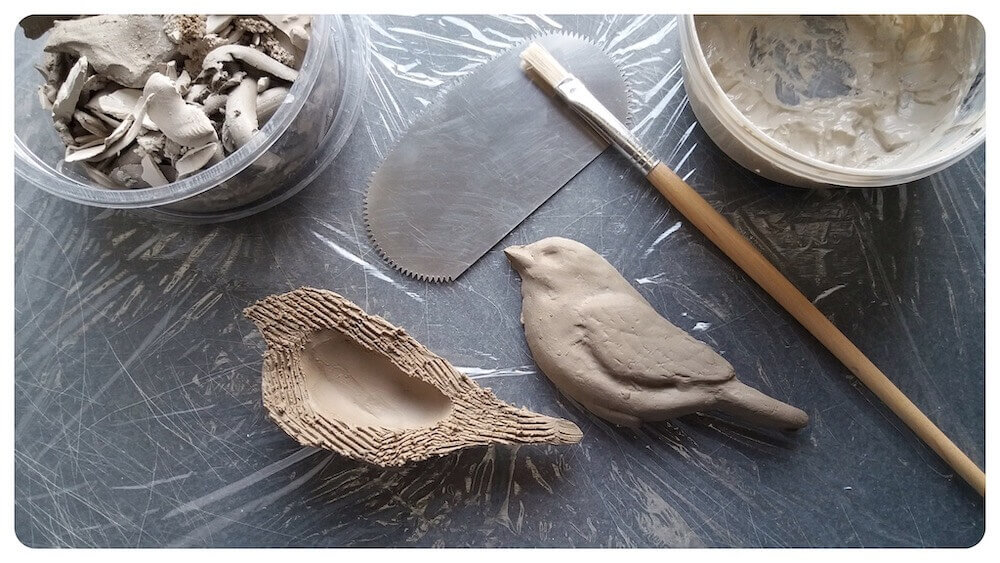
Artwork, 2385 Sparrows (work in progress)
Photo credit: Fiona Jappy
This project first started at the end of 2017 with the initial idea I had and it is a planned 25-year project.
2385 sparrows will be made, one to represent each man lost at sea, and each sparrow is individually hand-built and hand-painted.
To date, 165 sparrows have been made and 16 sparrows have been fully painted.
25 years sounds like a really long time but with also continuing to create paintings, drawings, and prints, and each sparrow being uniquely handmade, this gives me the time to create them.
The project did see a delay during 2018 with the diagnosis of my mum having stage 4 lung cancer and her subsequent death, from which I had to take some time out from my studio.
The first complete 16 sparrows were only just publicly launched on November 1st this year, so even though this project saw its beginnings at the end of 2017, it is still very early doors for it.
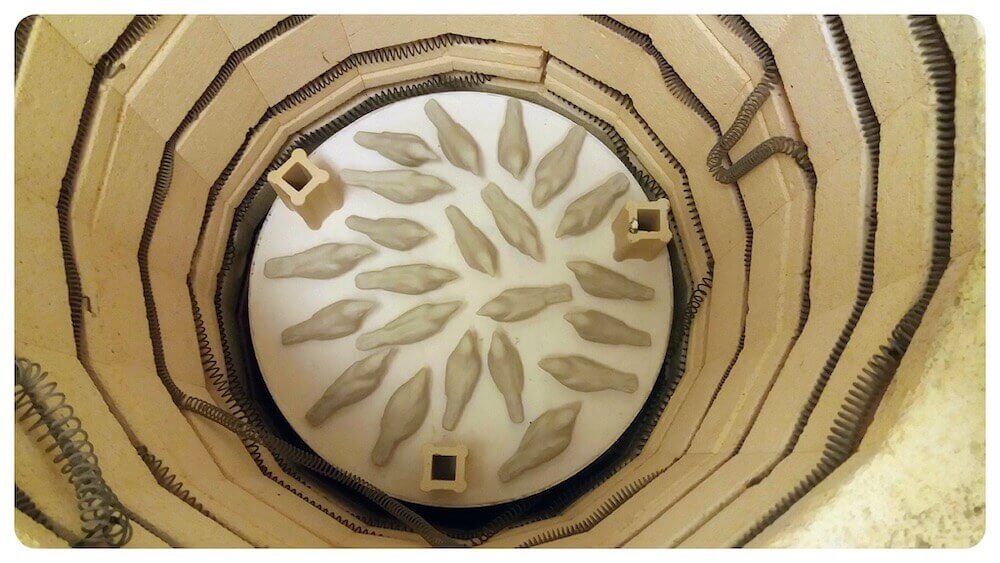
Artwork, 2385 Sparrows (kiln firing)
Photo credit: Fiona Jappy
They are all handmade using clay. I initially made a few different clay sparrows, each of the sparrows being made in two halves, with each design being slightly different from each other.
Plaster moulds were then made from these birds and these moulds are used to create my sparrows for the project.
Clay is pushed into the moulds, with the two halves of each sparrow being removed once the clay starts to shrink from the edges.
The two halves of a design are fitted together, with scoring and slip, and with me handworking them together.
Sometimes I add more clay to certain areas, and the parts of the birds such as the eyes and the wings are also hand-carved.
This results in every single clay sparrow having its own individual character. Once made the birds have to dry out before being bisque fired in a kiln.
They are then hand-painted with acrylic paint and finally coated with varnish. Each sparrow is being painted with its own unique design and so no two birds made will ever be identical.
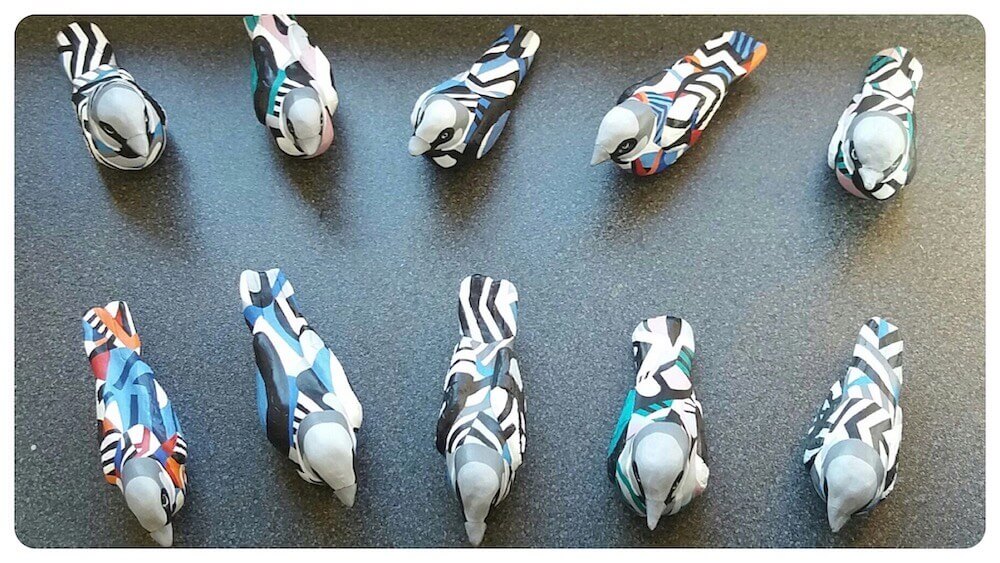
Artwork, 2385 Sparrows (detail)
Photo credit: Fiona Jappy
Remembrance Sunday will be a quiet day spent with my father and commemorating all those who have given service to their country and all those who have paid the ultimate sacrifice.
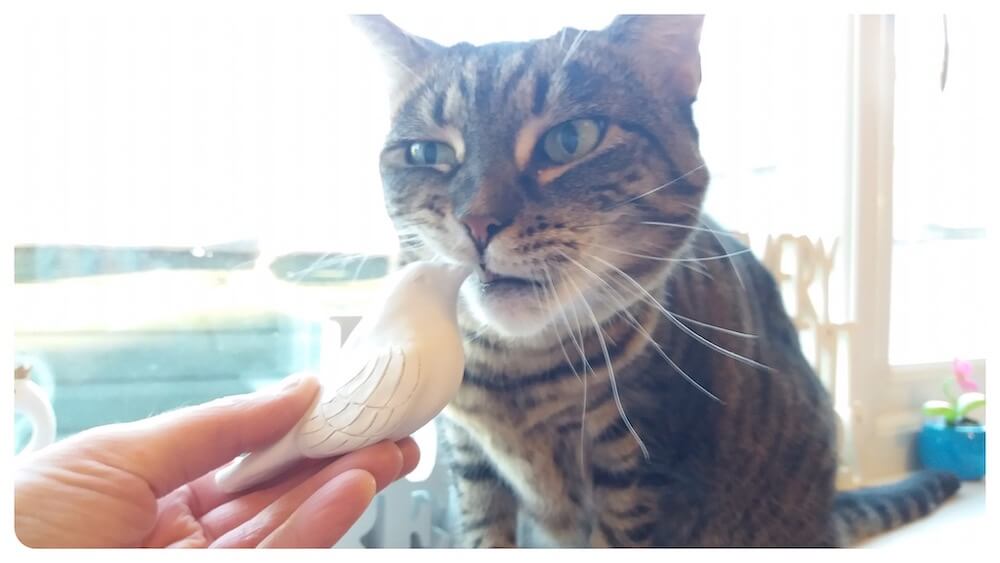
Studio shot with Fiona’s cat, with artwork, 2385 Sparrows (detail)
Photo credit: Fiona Jappy
No one else can know what an artist needs to say – but we can help them say it.
English for Art Careers | Further Reading
Thank you Fiona for taking the time to explain and share your artwork with us and sharing the language of English.
For more information about Fiona’s work here.
At Blue Noun English Language School, we are here to help anyone learning English for art careers.
If you would like another blog touching Scottish remembrance themes, try:
Learning English in Perthshire | Scotland’s best, worst soldier?
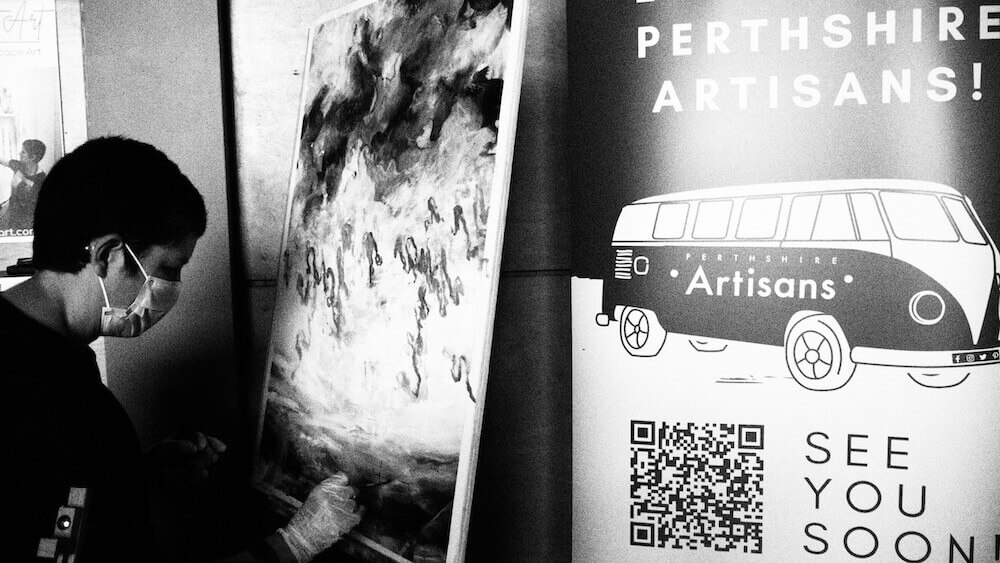
We Know How Artists Work
Just as you have developed skills in particular software, or using a sewing machine or a printing press or in casting metal, if you need to learn something to develop your practice – you do it.
You absorb these skills into who you are as a creative – and how you make your work.
They become part of your creative voice.
English is just another tool and techinique to make your own!
Further Resources | Creatives Talk
If you are looking for English for Creative Careers, we have an online English course for artists.
Read our interview with Artist/Musician Johanna McWeeney.

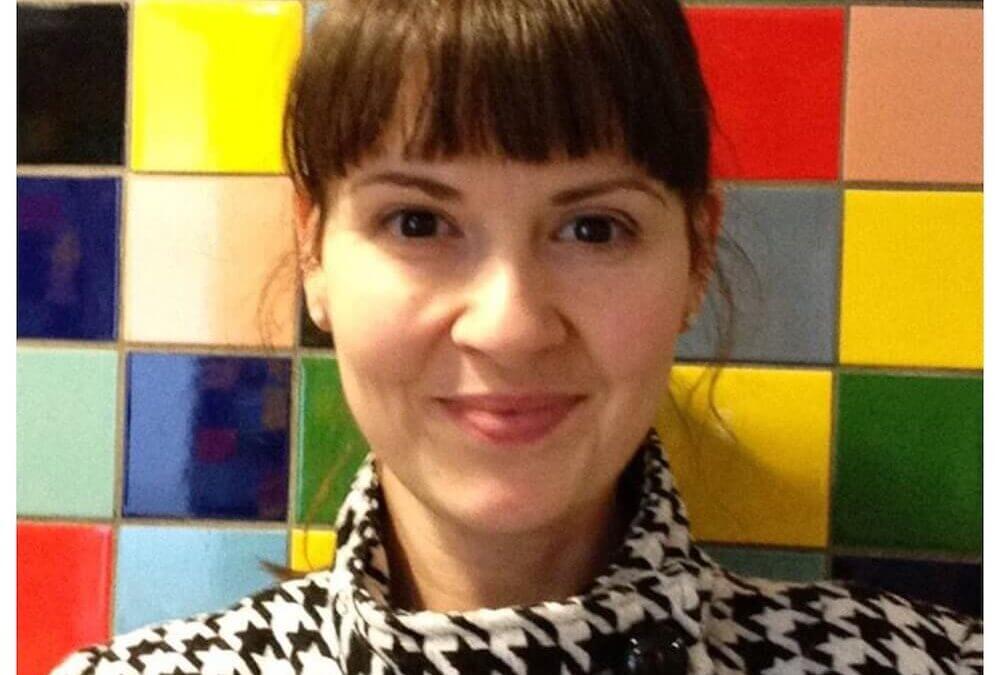

Recent Comments